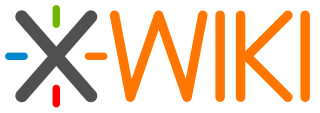XSLT is a language originally designed for transforming XML documents into other XML documents, or other formats such as HTML for web pages, plain text or XSL Formatting Objects, which may subsequently be converted to other formats, such as PDF, PostScript and PNG. Support for JSON and plain-text transformation was added in later updates to the XSLT 1.0 specification.
In computer science, a preprocessor is a program that processes its input data to produce output that is used as input in another program. The output is said to be a preprocessed form of the input data, which is often used by some subsequent programs like compilers. The amount and kind of processing done depends on the nature of the preprocessor; some preprocessors are only capable of performing relatively simple textual substitutions and macro expansions, while others have the power of full-fledged programming languages.
A query language, also known as data query language or database query language (DQL), is a computer language used to make queries in databases and information systems. In database systems, query languages rely on strict theory to retrieve information. A well known example is the Structured Query Language (SQL).
A domain-specific language (DSL) is a computer language specialized to a particular application domain. This is in contrast to a general-purpose language (GPL), which is broadly applicable across domains. There are a wide variety of DSLs, ranging from widely used languages for common domains, such as HTML for web pages, down to languages used by only one or a few pieces of software, such as MUSH soft code. DSLs can be further subdivided by the kind of language, and include domain-specific markup languages, domain-specific modeling languages, and domain-specific programming languages. Special-purpose computer languages have always existed in the computer age, but the term "domain-specific language" has become more popular due to the rise of domain-specific modeling. Simpler DSLs, particularly ones used by a single application, are sometimes informally called mini-languages.
Extensible Application Markup Language is a declarative XML-based language developed by Microsoft for initializing structured values and objects. It is available under Microsoft's Open Specification Promise.
A GIS software program is a computer program to support the use of a geographic information system, providing the ability to create, store, manage, query, analyze, and visualize geographic data, that is, data representing phenomena for which location is important. The GIS software industry encompasses a broad range of commercial and open-source products that provide some or all of these capabilities within various information technology architectures.

XWiki is a free wiki software platform written in Java with a design emphasis on extensibility. XWiki is an enterprise wiki. It includes WYSIWYG editing, OpenDocument based document import/export, semantic annotations and tagging, and advanced permissions management.

LAMP is an acronym denoting one of the most common software stacks for many of the web's most popular applications. However, LAMP now refers to a generic software stack model and its components are largely interchangeable.
Open Power Template is a web template engine written in PHP 5. A common strategy in designing web application is separation of the application logic from the presentation. OPT is a tool for implementing such separation. The presentation layer is represented by templates, text files with HTML code and extra instructions controlling the data substitution.

A web template system in web publishing allows web designers and developers work with web templates to automatically generate custom web pages, such as the results from a search. This reuses static web page elements while defining dynamic elements based on web request parameters. Web templates support static content, providing basic structure and appearance. Developers can implement templates from content management systems, web application frameworks, and HTML editors.
The following outline is provided as an overview of and topical guide to software:
Knowledge extraction is the creation of knowledge from structured and unstructured sources. The resulting knowledge needs to be in a machine-readable and machine-interpretable format and must represent knowledge in a manner that facilitates inferencing. Although it is methodically similar to information extraction (NLP) and ETL, the main criterion is that the extraction result goes beyond the creation of structured information or the transformation into a relational schema. It requires either the reuse of existing formal knowledge or the generation of a schema based on the source data.
Thymeleaf is a Java XML/XHTML/HTML5 template engine that can work both in web (servlet-based) and non-web environments. It is better suited for serving XHTML/HTML5 at the view layer of MVC-based web applications, but it can process any XML file even in offline environments. It provides full Spring Framework integration.

An XML transformation language is a programming language designed specifically to transform an input XML document into an output document which satisfies some specific goal.
The following outline is provided as an overview of and topical guide to the Perl programming language:
ProcessWire is a free and open source content management system (CMS), content management framework (CMF) and web application framework (WAF) written in the PHP programming language. It is distributed under the Mozilla Public License 2.0. ProcessWire is built around an API with usage and naming conventions similar to the JavaScript framework jQuery. The stated goal behind the API is to provide the level of accessibility and control to pages in a website that jQuery provides to the DOM. Content is managed either via the API or the web-based admin control panel. ProcessWire is largely used for development of web sites, web applications, services, content feeds and related applications.
Apache Attic is a project of Apache Software Foundation to provide processes to make it clear when an Apache project has reached its end-of-life. The Attic project was created in November 2008. Also the retired projects can be retained.




